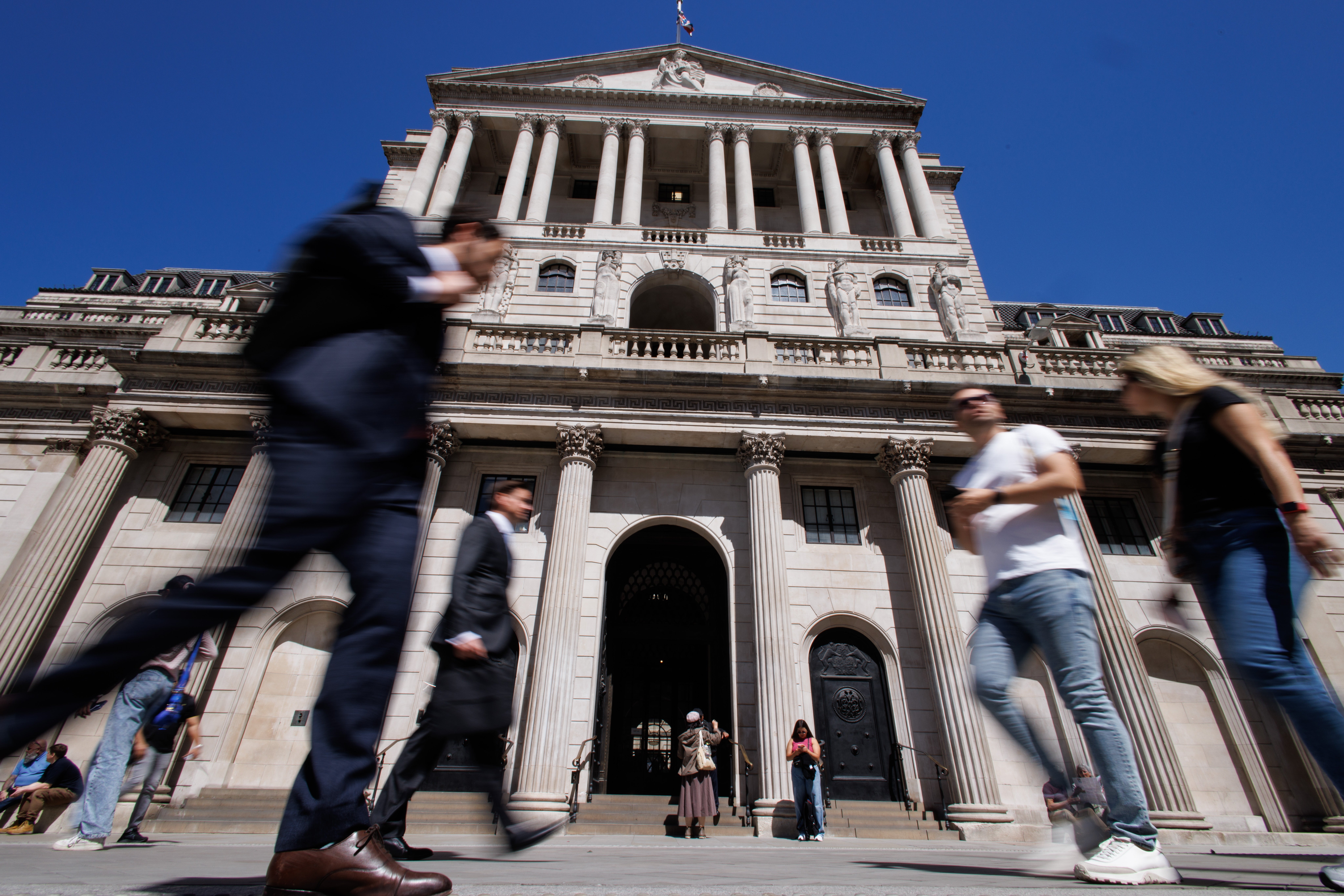Borrowers are crying out for help, but interest rate cuts might not come until November
Struggling homeowners are desperate for a long-anticipated cut in the cost of borrowing. But with a change of government looking likely, the Bank of England might be tempted to wait until as far ahead as late autumn, says James Moore


Finely balanced” was how the Bank of England’s rate-setting Monetary Policy Committee (MPC) described its decision to hold interest rates yet again. The election? Absolutely, positively, nothing to do with the decision, it said.
With the Bank in purdah, there were none of the usual commentaries or press conferences to accompany the decision, so there’s even more guesswork than usual in relation to when the much-anticipated rate cut might finally come.
What we do know is that the vote went seven to two in favour of standing still; one of the Bank’s deputy governors, Dave Ramsden, joined interest rate dove-in-chief Swati Dhingra in calling for an immediate cut. The seven others have “a range of views” on what should happen next and how restrictive the Bank’s stance should be.
Among the hawks, there were concerns that inflation’s return to the target of 2 per cent was “welcome” but not necessarily “indicative of the required sustained return to target”. To have inflation return to around 2 per cent sustainably is what matters to the MPC, which took considerable heat for acting too slowly to contain last year’s inflationary spike.
Inflation is forecast to rise again in the second part of the year, because the sharp drop in energy prices vs last year will fall out of the calculation. The drop in wholesale prices in the early part of the year played a major role in bringing the headline rate down.
These hawks are also worried about elevated “core” inflation, which excludes volatile components such as energy, food and tobacco, and stood at 3.5 per cent in May. Service price inflation was also uncomfortably high at 5.7 per cent, even though the price of goods was in negative territory.
We don’t know how many MPC members are in this group, because the minutes don’t tell us. But I think we can safely assume it includes the three hawkish external members Catherine Mann, Jonathan Haskel, and Megan Greene.
A second “finely balanced” group thinks the high rate of service price rises did not “alter significantly the disinflationary trajectory that the economy was on”. How many of the Bank’s in-house team are in this group, and how many are with the three hawks? This should become clearer after the election.
Needless to say, optimists such as Capital Economics see the seven-to-two vote, the use of the term “finely balanced”, and the change of tone compared with May’s minutes as signs that an August rate cut remains firmly in play. It said: “There was new wording, that members of the MPC will consider all the information available and how this affects the assessment that the risks from inflation persistence are receding ‘as part of the August forecast round’. We would interpret this as a sign the Bank is willing to cut rates in August, if the data evolves as it expects.”
Other factors to consider are the Bank’s concerns about the reliability of labour market information from the Office for National Statistics (ONS), a problem the latter has admitted. Poor data complicates decision-making. But an apparently high level of wage settlements, and their close linkage to service prices, could be grounds for staying put until later in the year.
The outcome of the election may also play a role, if, as is now quite widely expected, there is a change of government and thus a shift in fiscal policy. MPC members might prefer to see how that shakes out before pushing the button.
Remember, too, that despite the cooling impact of high rates, the economy is performing above the Bank’s expectations. Even the zero growth recorded by the ONS in April was above its projection.
Small businesses and domestic borrowers, especially mortgage-holders on cheap fixed-rate deals, facing a harsh new reality when they remortgage, have been crying out for a cut as soon as possible.
“The danger posed by stifling growth must not be ignored, as doing so will have potentially devastating consequences for small businesses,” said Martin McTague, chair of the Federation of Small Businesses. “Small firms will be hoping that the tipping point for a cut will be reached sooner rather than later, to help them invest and scale up.”
One has to sympathise with those at the sharp end of this. Rates are not currently high by historical standards. But they are very high by recent standards, and the pain this is causing – especially when you consider all the other recent economic challenges Britain has faced – is real.
I still think a cut in September is more likely than one in August. And we may even have to wait until November, depending on how inflation evolves. Remember, the MPC’s mandate is to maintain price stability and hold to that 2 per cent target at all times, not to win a popularity contest.
Join our commenting forum
Join thought-provoking conversations, follow other Independent readers and see their replies
Comments
Bookmark popover
Removed from bookmarks